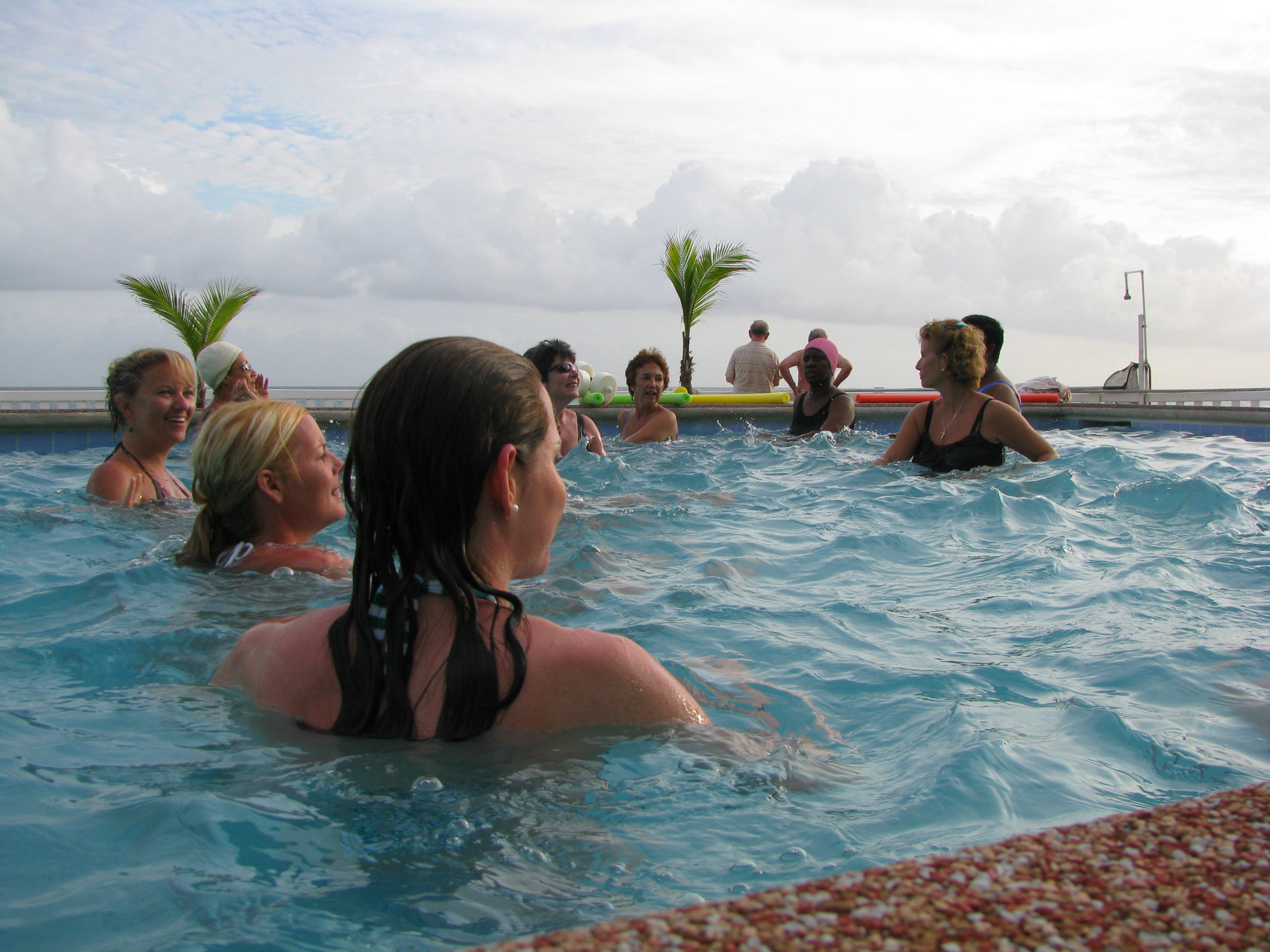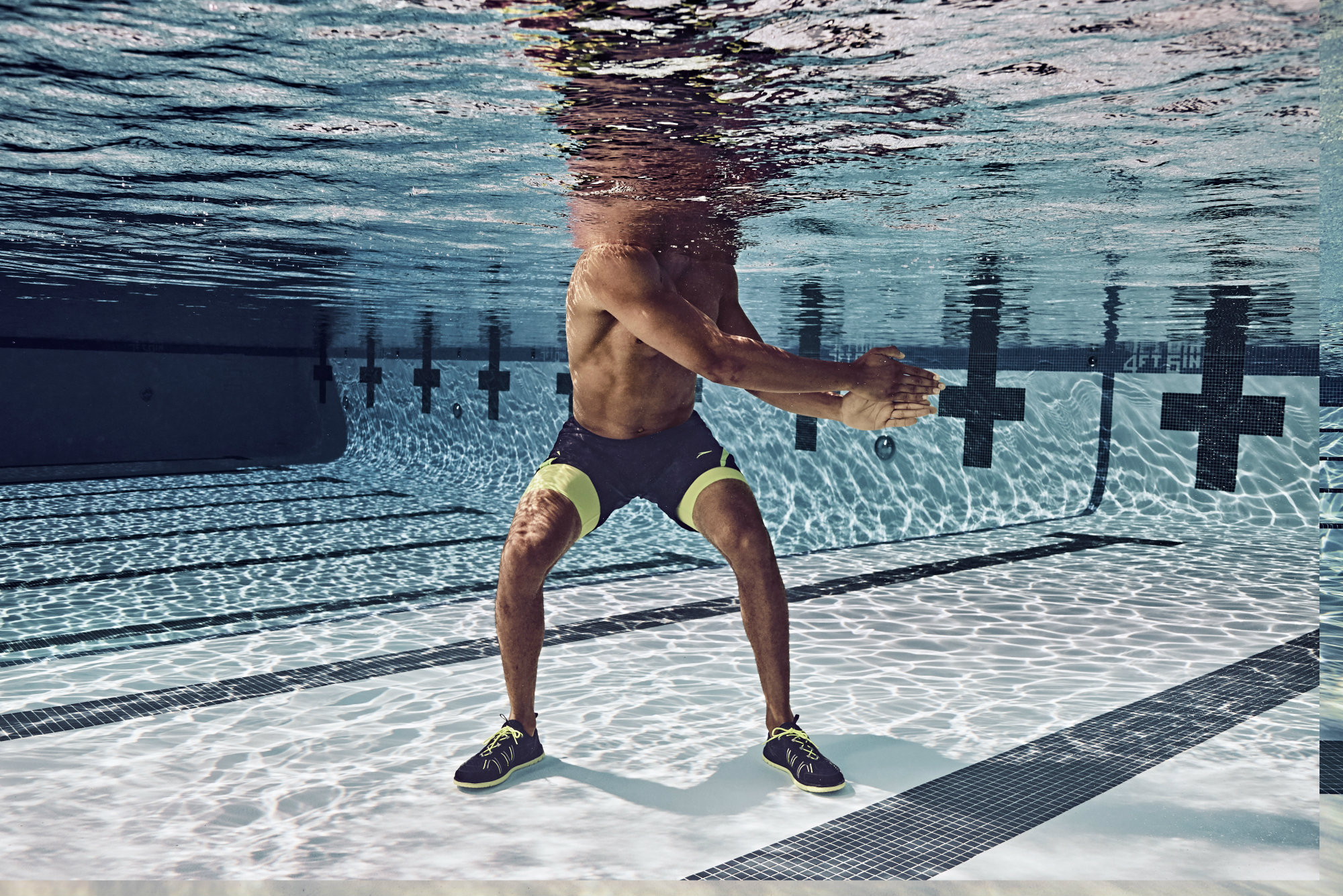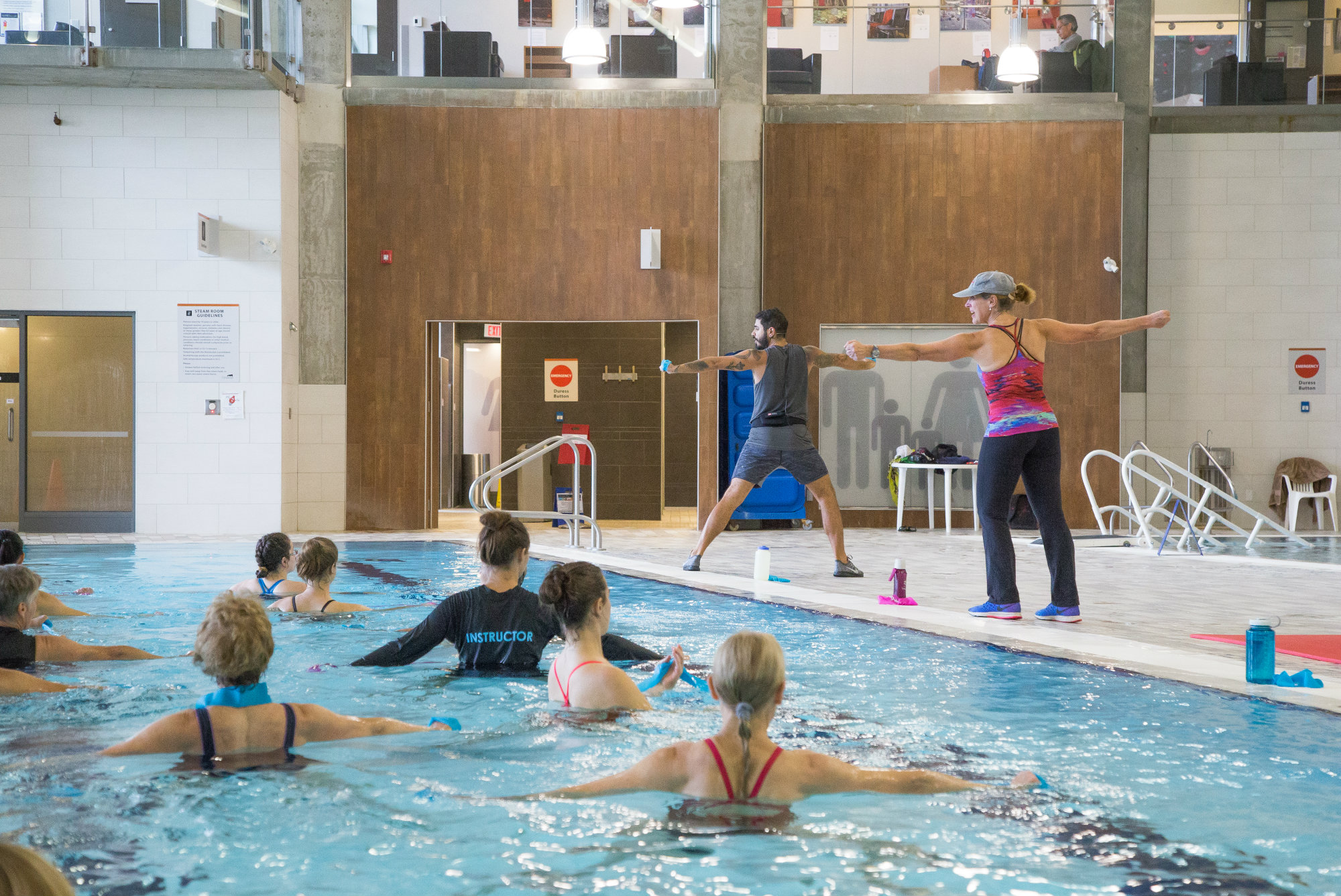Never before has there been a better opportunity for the industry to capitalize on the health benefits water fitness provides.
As Baby Boomers age, they are looking for exercises to stay active without putting extra strain on their joints. At the same time, Millennials seem more health conscious at an earlier age than their predecessors.
Around the world, wellness represents a $3.4 trillion market, according to the Global Wellness Institute. This category includes fitness and weight loss — areas where water exercise proves beneficial. There is good reason to believe the pool and spa industry stands to profit from promoting swimming and water exercise as an investment in long-term health.
PSN spoke with clinical researchers and industry leaders to gain insight into the connection between water exercise and health, and what this could mean for the industry’s future.
What Science Says
Studies have consistently supported swimming as a beneficial cardiovascular exercise. Movement in water also has proven effective at strengthening muscles without putting extra stress on joints.
Current guidelines from the Centers for Disease Control and Prevention (CDC) state that swimmers have about half the risk of death when compared to inactive people. In addition, people report enjoying water-based exercise more than land-based.

Photo: Chris Blanar
The Arthritis Foundation has long recommended warm water immersion to alleviate arthritis pain, while saying that aquatic exercise helps keep joints moving and reduces symptoms. But new studies are uncovering additional ways that being in the water improves health. One recently released study, published in the Archives of Physical Medicine and Rehabilitation, suggests swimming can reduce fibromyalgia symptoms. Another seemed to show that water exercise might delay effects of dementia, as published in the Journal of Neurology.
The benefits are being recognized in other arenas as well. “One of the places I see aquatic exercise continuing to grow is … for weight management,” says Jackie Nagle, Ph.D., an assistant professor in the Department of Exercise Science & Sports Studies at John Carroll University in University Heights, Ohio.
Nagle, who studies the effects of aquatic exercise on people who are morbidly obese, says the calorie burn for water and land is very close, but people can exercise longer in water. She also believes people form more of a community around water exercise and are more likely to adhere to a fitness program as a result.
Leading the Way
There already are promising initiatives to study and promote the health benefits of swimming and water exercise — and to debunk the myth that aquatic workouts are only meant for seniors with arthritis.
Pool and spa professionals may be experts in their field, but not in health and fitness. For someone who doesn’t know what to search for, it can be hard to find specific information in this area. There’s also the issue of knowing how convey that information to the general public in a way they understand and can apply, says Dr. Thomas Lachocki, Ph.D., CEO of the National Swimming Pool Foundation.
As part of an effort to make information more accessible, NSPF has partnered with Chattanooga, Tenn.-based recreation products manufacturer Playcore to publish “Water Immersion Works.” The publication is specifically dedicated to curating the latest water exercise-related research and features 13 segments written by aquatics scholars on their area of expertise.
The World Aquatic Health Conference, also sponsored by NSPF, has assembled speakers to highlight the benefits of water exercise and immersion for 13 years. “The more we broadcast positive messages, the greater the chance that we build demand for pools, hot tubs and aquatic facilities,” Lachocki says.

Among other commercial efforts to spread this message, Speedo recently launched a marketing campaign to promote its new line of water workout gear. To showcase the gear in action, the swimwear firm partnered with athletic training firm EXOS to design water workouts. A 60-plus video series, called Speedo FIT, features an instructor explaining each exercise while an athlete demonstrates in the pool.
In perhaps the most modern American effort to promote pools as a place for a comprehensive workout, television commercials for Speedo FIT aired over the summer and featured Olympic swimmers Ryan Lochte, Missy Franklin, Natalie Coughlin, Nathan Adrian and Cullen Jones.
The company counted among its target audience everyone from athletes to everyday fitness enthusiasts. The campaign comes on the heels of research by the Sports & Fitness Industry Association showing that more people are participating in water fitness.
If You Build It …
Pool contractors donu2019t necessarily have to know the ins and outs of water fitness to jump on the health bandwagon. A good partnership might do just as well.
Charline Kopansky, president and founder of The Canadian Aquafitness Leaders Alliance (CALA), based in Toronto, Ontario Canada, suggests pairing fitness instructors, such as herself, with members of the industry. Water exercise forms a social network and doesnu2019t have to take place in a large aquatics facility, she adds. It can be done on a small scale in neighborhood private pools.
Some builders have been known to work with local swim schools to host classes in their display pools. This comes in the name of promoting safety on a local level. Why not try the same thing to encourage the use of pools and spas for fitness?

Tom Hajduk Photography
Charlene Kopansky, president and founder of the Canadian Aquafitness Leaders Alliance Inc. (CALA), teaches a water fitness class with a fellow instructor.
“We saw an exciting opportunity to grow beyond our medal-winning heritage in competitive swimming to lead the industry in this untapped market of aquatic fitness,” says Mike Kelly, executive vice president of marketing at Speedo parent company PVH Corp., based in New York.
Using famous athletes is an effective way to reach the general public, says Marc Pérez, marketing manager at Fluidra in Sabadell, Barcelona, Spain. “They have credibility and reach a wide audience,” he says. “AstralPool [has] experience working with elite swimmers and water polo players, [which] has always been positive and [had] high visibility in the media.”
The corporation recently took part in another move to introduce a new generation to water and wellness. Fluidra Engineering completed design and construction on the first known children’s spa. Likids is designed for youngsters aged three to eight and includes an aquatics area, among other spa amenities. It is part of the Caldea spa resort in Escaldes-Engordany, Andorra, reportedly the largest spa resort in Europe.
-
Fluidra Designs First Destination Spa Devoted to Children
The Andorran facility introduces children to the benefits of water immersion at a young age
Industry Obstacles
Medical researchers have known for years that water exercise offers significant health benefits. However, it’s unclear how much of this knowledge has trickled down to the general public.
Outside of avid swimmers — people who grew up with regular access to a private pool or aquatics facility — it’s likely that many Americans aren’t aware.

Photo Credit: Karen and Kerry
One theory on why water exercise hasn’t caught on as much as land-based exercise is because people often associate it with older people and arthritis. Organizations such as The Arthritis Foundation have funded the majority of water exercise research and have been the major proponents of water exercise.
While the evidence is there, it will take some work to get the word out, some believe. In order to see a shift in consumer behavior, it likely will require work from a variety of industry players, from builders to manufacturers.
“At every point of contact with the consumer, you have a chance to have that [health] conversation,” says Carvin DiGiovanni, vice president of technical and standards at The Association of Pool & Spa Professionals (APSP), in Alexandria, Va.
He points out that some manufacturers are shifting their brands to tap into a more health-conscious consumer, making pools and spas part of the fitness conversation, such as when hot tube/swim spa producer Watkins changed its name to Watkins Wellness.
-
Fluidra Designs First Destination Spa Devoted to Children
The Andorran facility introduces children to the benefits of water immersion at a young age
Builders, retailers and service professionals have a role to play as well. Since they’re interfacing directly with consumers, being able to explain the added value pools and spas bring to overall wellness can help get the message out there.
Next Steps
There’s no disputing the fact that promoting the health and wellness benefits of water immersion and aquatic exercise can yield positive results for the industry.
But who will lead the charge? Perhaps it’s time for the industry to come together in a cohesive effort to change the way customers think about investing in a pool or spa.



